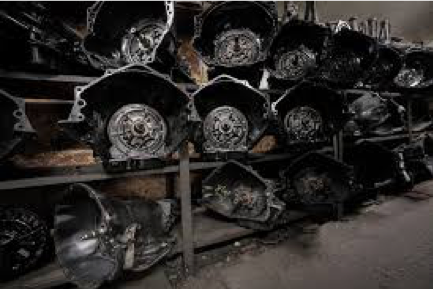
This week my Jeep goes in for its third transmission replacement in the months I’ve owned it. I bought it knowing the transmission needed to be replaced; it was priced accordingly. Unfortunately, the company that manufactured the original transmission has had some issues, so it’s been replaced under warranty once already. In diagnosing what’s wrong, we’ve had to rule out several things, particularly for the second replacement. So far, I’ve replaced the rear main, the clutch, and the shifter. (The first two of the three were done with the first transmission while it was out.) Now there is no question that the problem is with the transmission itself.
Problem-solving can be like that, can’t it? In my last parish, there was a leak in the rectory that took a long time to find. That water found an uncanny path through an outer wall to show up in the kitchen ceiling. We assumed it was a plumbing issue with the bathroom above. How frustrating it was to realize after many attempted repairs that it was a leak around a window instead. Even then, it took removing all of the siding from the house on that side to find it. It was time-consuming and expensive, but in the end, it was the only option. It was a process of trial and error, but we finally solved it.
These are the stories and experiences that make us reluctant to tackle some problems, right? There is innate self-preservation that causes us to ignore things that we know could be more involved. There is a sub-conscious effort to convince ourselves that such problems aren’t that bad. Other times it’s a kind of irrational wish that they will solve themselves so that we don’t have to deal with it. When we're rational, we know that ignoring problems usually makes them worse. Such tactics cost us more in the long run!

Then there are the problems that aren’t as simple as a single cause and effect matters. Some issues are complex and resist simple trial and error. I learned back in high school science that controlling variables is essential when testing a hypothesis. Many variables simply resist control out in the real world! This complexity also adds to a reluctance to tackle problems, or at least an inability to know where to start. There is a point at which the options and the opportunities are so high in number that we can’t choose which one is likely to be the best bet.
Perhaps the last challenge to problem-solving are the factors that work against finding solutions. When an expert tells you that the lump you reported isn’t anything to worry about, you’re less likely to pursue it. Sometimes it turns out they are wrong, and we find out later it is cancer. Sometimes we won’t allow ourselves to believe that there is a problem. My child/pastor/company/party/friend could never do something that constitutes a problem, and we ignore it. When the principal calls or the pastor gets arrested, however, we realize we were wrong.
All of this taken together explains why we have so many big problems that go unresolved. A leaky roof and a faulty transmission are one thing, but problems like low reading outcomes in a district, or immigration reform that is both humane and effective, or the collapse of respectful dialogue and cooperation in public arenas are an entirely different matter altogether. The latter examples represent things we can’t solve on our own. The last example is probably the biggest reason many big, national problems aren’t addressed, but it’s a problem in and of itself! The reality is that such problem solving, or even problem “addressing” will take a tremendous amount of work; it will take time and humility; it will take creativity and humility; it will take selflessness to meet the cost; it will take a generation that isn’t concerned with winning points against those who have different ideas, but working with all the ideas on the table to find something that we can at least try in an effort to chip away at the problem. Some, perhaps many, will fail, but with each, we learn, and with each, we get closer to the solution(s).
We all tend to suffer from the phenomenon of discounting the future. On one level, we know what the long-term looks like for a lot of these issues, and it isn’t good. All of the motivations to ignore and challenges to motivate gain traction, however, because what we see and feel right now is always more important than tomorrow; today is much more motivating than an unknown fifty years in the future. Inaction is rarely the solution to a problem. That’s why we should celebrate those who are trying and help where we can. That’s why we can ask ourselves what we can do, as limited as we may be in our ability to make things better. Will our advocacy, our dollars, our letters, our voice, our questions, our ideas, or our prayers be effective? If there’s any chance that the answer is yes, it’s our responsibility to offer them.
I know it’s frustrating to stare down at the big hairy problems of our day and not know how we fit in. That doesn’t mean we get a pass. I learned a long time ago that I hold the key to a lot more doors than I would have guessed. I learned it from a great philosopher, a strange, yellow-orangish, hairy creature in my childhood. He may have only been a character in a children’s book, but it was a message that has stuck with me: “Unless someone like you cares a whole awful lot, nothing is going to get better. It’s not!” That philosopher was Dr. Seuss’s Lorax, of course, and he wasn’t wrong. He still isn’t, as far as I can tell.
Tom+
God, grant me the serenity to accept the things I cannot change, courage to change the things I can,and wisdom to know the difference. Amen.
